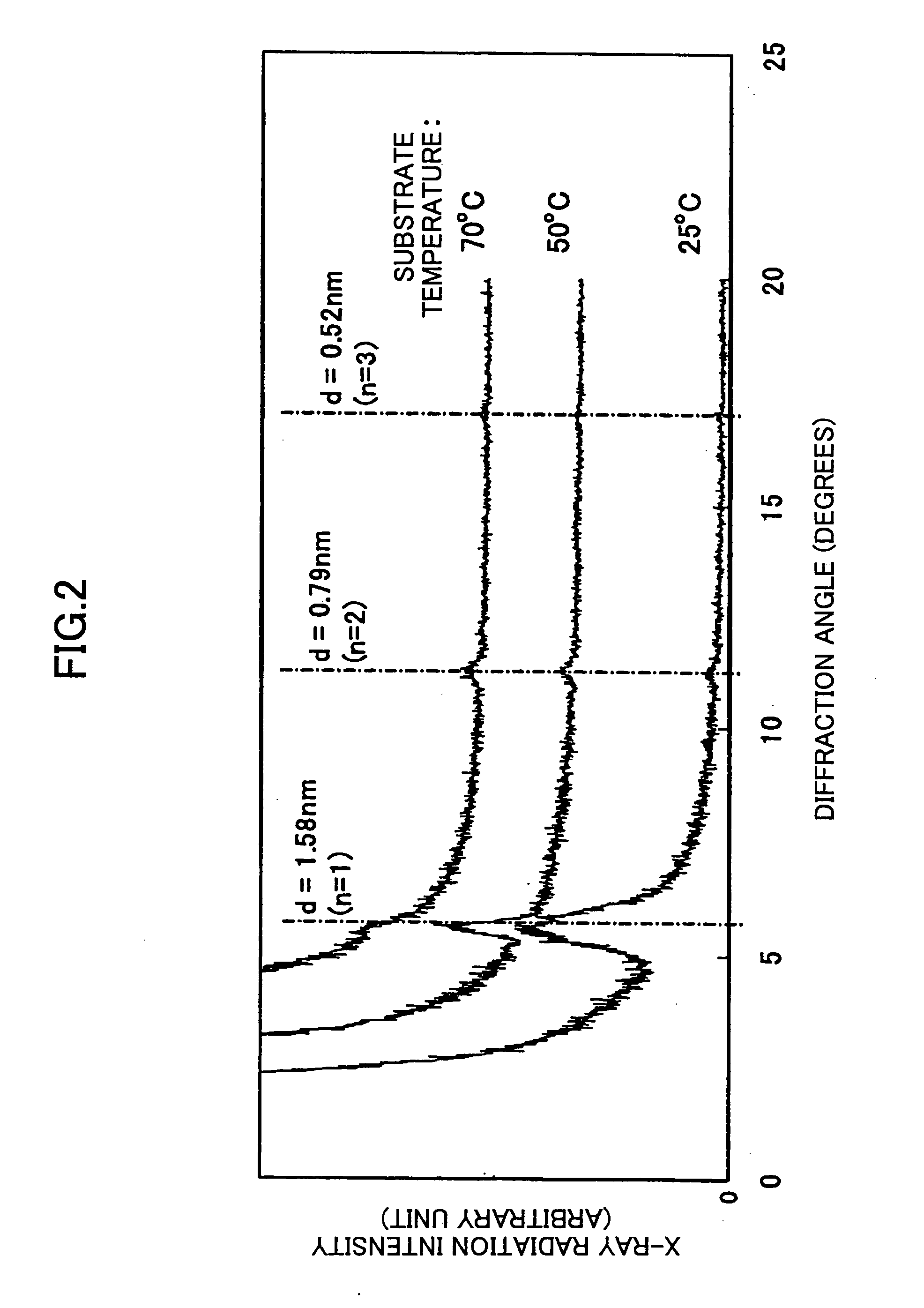Organic thin-film transistor and fabrication method thereof and organic thin-film device
a thin-film transistor and organic technology, applied in transistors, solid-state devices, thermoelectric devices, etc., can solve the problem of difficulty in obtaining an organic tft of n-type having a high electron-mobility, and achieve the effect of higher carrier-mobility
- Summary
- Abstract
- Description
- Claims
- Application Information
AI Technical Summary
Benefits of technology
Problems solved by technology
Method used
Image
Examples
example 1
PRACTICAL EXAMPLE 1
[0082] {1} Synthesis of tetradecafluoropentacene
[0083] First, tetradecafluoropentacene was synthesized by the following procedures.
[0084] {1-1} First, 1,2,3,4,8,9,10,11-octafluoro-5,7,12,14-tetrahydroxypentacene-6,13-dione (3) was synthesized from 5,6,7,8-tetrafluoro-9,10-dihydroxy-2,3-dihydroanthracene-1,4-dione (1) and 4,5,6,7-tetrafluoroisobenzofuran-1,3-dione (2).
[0085] 5,6,7,8-tetrafluoro-9,10-dihydroxy-2,3-dihydroanthracene-1,4-dione (1) (9.84 g, 31.3 mmol), 4,5,6,7-tetrafluoroisobenzofuran-1,3-dione (2) (5.75 g, 26.1 mmol), aluminum chloride (1.53 g, 11.5 mmol), and sodium chloride (10.0 g, 171 mmol) were thrown into a 200 mL autoclave made of SUS and heating was made at 280° C. for 1 hour. After the completion of the reaction, cooling was made down to room temperature, the reaction mixture was poured into dilute hydrochloric acid, and stirring was made at 100° C. for 1 hour. Subsequently, the mixture was filtered and the residue was washed with methanol...
example 2
PRACTICAL EXAMPLE 2
[0115] {1} Synthesis of dodecafluoronaphthacene
[0116] First, dodecafluoronaphthacene was synthesized by the following procedures.
[0117] {1-1} First, 1,2,3,4,7,8,9,10-octafluoro-6,11-tetrahydroxynaphthacene-5,12-dione (7) was synthesized from 1,2,3,4-tetrafluoro-5,8-dimethoxynaphthalene (6) and 4,5,6,7-tetrafluoroisobenzofuran-1,3-dione (2).
[0118] 1,2,3,4-tetrafluoro-5,8-dimethoxynaphthalene (6) (4.77 g, 18.3 mmol), 4,5,6,7-tetrafluoroisobenzofuran-1,3-dione (2) (4.77 g, 21.7 mmol), aluminum chloride (23.1 g, 173 mmol), and sodium chloride (3.56 g, 60.9 mmol) were thrown into a 200 mL autoclave and heating was made at 200° C. for 1 hour. After the completion of the reaction, cooling was made down to room temperature, the reaction mixture was poured into dilute hydrochloric acid, and stirring was made at 100° C. for 1 hour. Subsequently, the mixture was filtered and the residue was washed with water, methanol and ether in order. The obtained solid was recrystalli...
PUM
 Login to View More
Login to View More Abstract
Description
Claims
Application Information
 Login to View More
Login to View More - R&D
- Intellectual Property
- Life Sciences
- Materials
- Tech Scout
- Unparalleled Data Quality
- Higher Quality Content
- 60% Fewer Hallucinations
Browse by: Latest US Patents, China's latest patents, Technical Efficacy Thesaurus, Application Domain, Technology Topic, Popular Technical Reports.
© 2025 PatSnap. All rights reserved.Legal|Privacy policy|Modern Slavery Act Transparency Statement|Sitemap|About US| Contact US: help@patsnap.com



